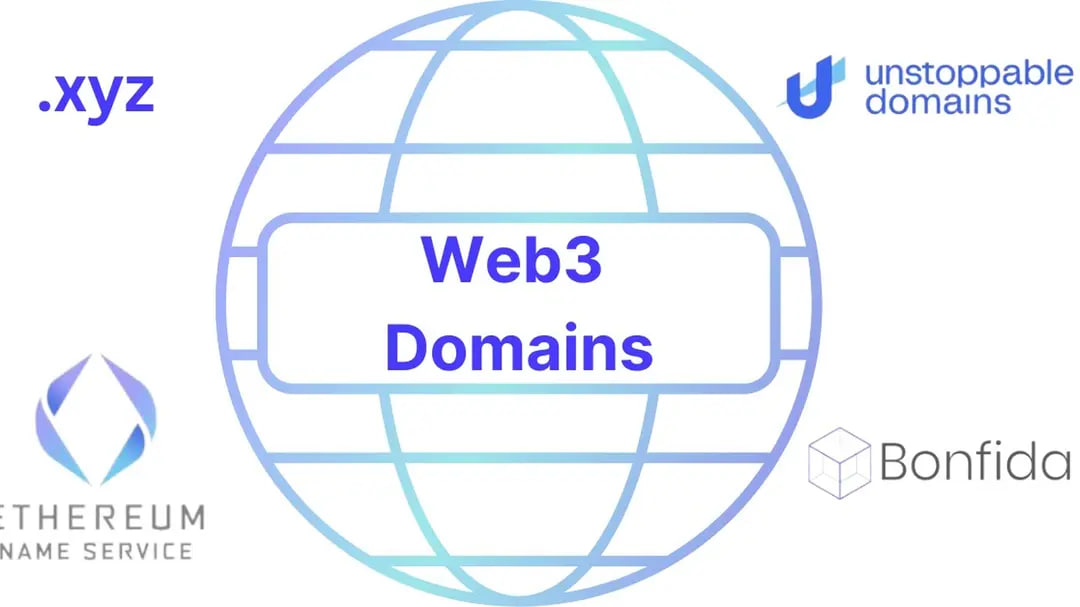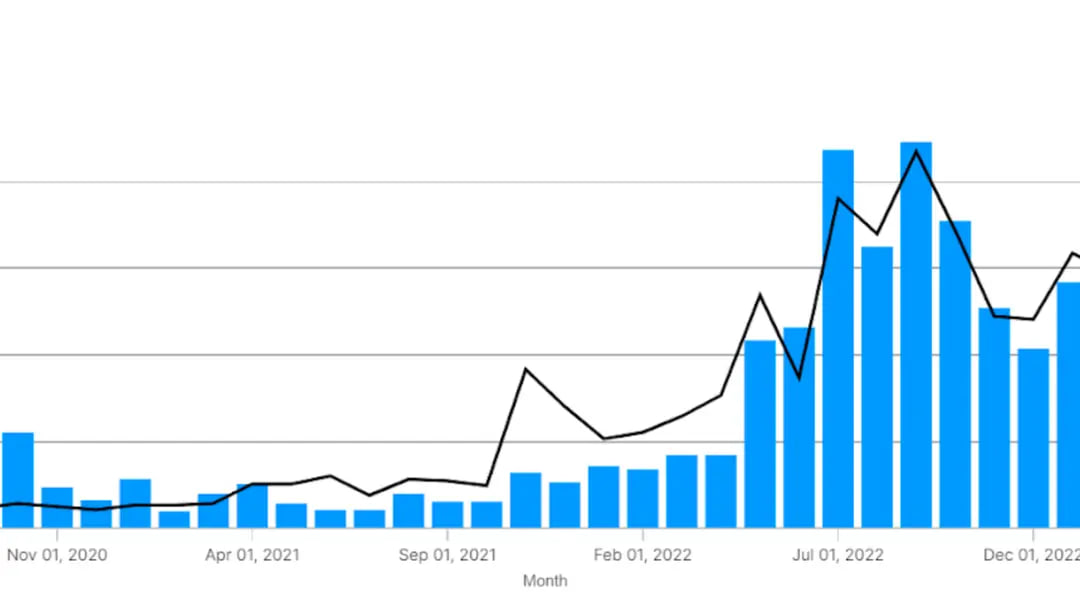Web 3.0 aims to radically change our online experience by making it more decentralized and user-controlled. This new era of the internet promises to give users more control over their data, enhance security, and create new opportunities for interaction. One of the key features of this new iteration of the internet is Web3 domains.
Unlike traditional domain names such as .com, .org, and others, which are managed by centralized organizations and registries, Web3 domains operate on decentralized networks like blockchain. Web3 domains open up new horizons for internet usage, providing more autonomy and security for owners.
- What is a web3 domain?
- How it works
- What types of web3 domains exist?
- Why do you need a Web3 domain?

What is a web3 domain?
Domains are website addresses that we use to navigate the internet using the domain name system (DNS). For example, to visit the Google site, we use the domain “google.com”. Traditional Web2 domains end in “.com”, like “youtube.com”.
However, traditional domains are mainly limited to displaying websites. This is due to their management by centralized servers, which has hindered innovation.
Fortunately, the blockchain technology on which web3 domains are based opens up entirely new possibilities!
These domains become part of users' identities in Web3, embodying the idea of a portable, sovereign identity. You own the information contained in the domain and decide how to use it. You can transfer your digital identity across platforms and applications. Web3 domains help identify NFT artists, DAO participants, or wallet addresses in blockchain applications, and also transfer your identity to the metaverse.
For comparison, below is a table of the differences between Web2 and Web3 domains:
| Criterion | Web2 Domains | Web3 Domains |
|---|---|---|
| Management | Centralized | Decentralized |
| Linkage | IP Addresses | Crypto Wallets and Blockchain |
| Ownership | Registered through intermediaries | Managed directly by the user |
| Security | Depends on registrar and hosting | Ensured by smart contracts and blockchain |
| Usage | Websites | Websites, Digital Identity, DApps |
| Metadata | Limited | Includes avatars, social media links, etc. |
Since domains exist on the blockchain, anyone can view the data stored there, ensuring a high level of openness and transparency.
How It Works
There are special applications on the blockchain that allow you to link a readable identification to your crypto wallet address. This can be, for example, your name converted into a domain format, like "papich.eth".
Thus, instead of giving out a long and complex wallet address such as "0x7bfee91193d9df2ac0bfe90191d40f23c773c060", you can simply say: "Send 1 ETH to 'papich.eth'". This is much faster, easier to remember, and significantly reduces the likelihood of errors when entering the address.

Once you mint (create) an NFT domain, you become its owner for a specific rental period. In some services, such as domains on the Algorand blockchain, you acquire ownership permanently. However, regardless of the ownership term, domains can be bought and sold on the secondary market, just like other NFTs. This opens up additional opportunities for investment and trading, making web3 domains not only a tool for simplifying interactions with cryptocurrencies but also a valuable digital asset.
In addition, web3 domains provide users with the ability to manage their digital identity and data independently, without relying on centralized organizations. This fosters the development of the concept of sovereign identity, where each user has full control over their data and can freely move between different platforms and applications while maintaining their identity and reputation.
What Types of Web3 Domains Exist?
The main difference between domains lies in the blockchain they operate on. One of the first domains to appear on the Ethereum network is ENS (Ethereum Name Service). This service allows users to identify themselves on all EVM-compatible blockchains.
Interestingly, ENS domain owners received a generous retrodrop, with amounts ranging from $30,000 to $70,000 depending on the number of characters in their domain name.
There are also domains on blockchains like Aptos, zkSync, and others. Multiple services providing domain names can exist on a single blockchain.
Examples of Blockchains and Web3 Domain Services:
1. Ethereum (ENS):
- Allows identification on all EVM blockchains.
- ENS domain owners received a generous retrodrop.
2. Aptos:
- A new blockchain with its own domain services.
3. zkSync:
- A blockchain with domain name support and various services.
Web3 domains can be either paid or free. The cost depends on the ownership term and the number of characters in the name: the shorter the name, the more expensive the domain.
It is important to note that if you do not renew your domain ownership, it will remain attached to your wallet until another user takes it over.
An excellent way to understand how people use web3 domains is to examine renewal and registration data. By analyzing both new registrations and renewals, we can not only assess their popularity but also determine whether interest in them persists over time.
Despite the current bear market, the number of renewals in the Ethereum Name Service (ENS) in 2023 remains stable as users actively retain their names. This steady growth in renewals indicates that people value their ENS domains.

Many also renew their domains in the hope of selling them at a higher price during the next bull market. Many brands that have not yet entered Web3 will be willing to buy them at a high price.
Why Do You Need a Web3 Domain?
Web3 domains offer numerous benefits for users, especially in the context of cryptocurrency and decentralized application development and usage. Let's consider the key advantages of these domains:
- Simplify getting started with cryptocurrencies and Web3: Web3 domains are easy to understand and set up, requiring no special technical knowledge.
- Replace long and confusing wallet addresses: These domains are easier to remember and write. Once the domain is linked to your wallet, you can easily share it with others.
- Reduce the possibility of errors when sending payments: Replacing long wallet addresses with short names reduces the likelihood of mistakes when sending payments.
- Create a digital identity: Web3 domains allow you to identify yourself in Web3 with a single profile that contains your avatar, social connections, and NFT collections.
- Simplify tracking identity and activity online: These domains can be used as a username for all your actions in Web3, such as logging into applications, sending and receiving cryptocurrency, accessing games, and other services.
- Use smart contracts for ownership management: Smart contracts provide a higher level of security compared to traditional domain names. They allow for the establishment of automatic rules for ownership transfer, making it difficult to steal or unlawfully acquire the domain.
- Assist in branding: Web3 domains offer a simple way to create a unique and memorable web address for your dApp or project. This aids in brand creation and makes it easier for users to find and remember your site.
Overall, Web3 domains not only significantly simplify interactions with cryptocurrencies and decentralized applications, but also provide safer, more convenient, and memorable ways to manage digital identities and brands in the decentralized internet. They open up new horizons for users, offering possibilities that were previously unavailable in the traditional web space, and contribute to a more personalized and secure internet experience.




